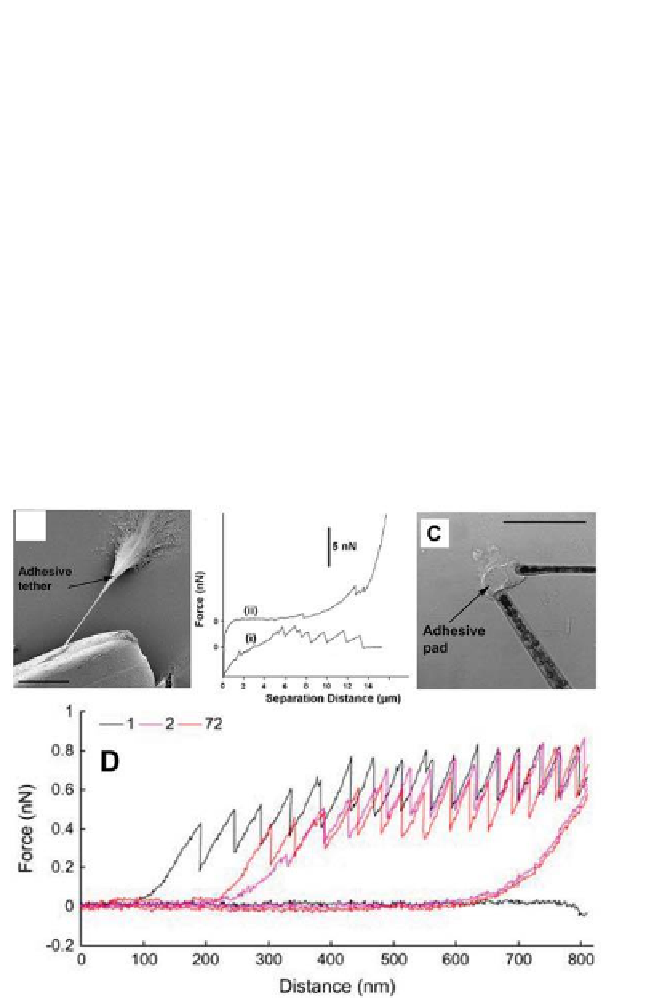Biology Reference
In-Depth Information
diatom species (
) and the force measurements were not
pinpointed to an observable adhesive structure, so it is dificult to rule out
interactions from the conditioning ilm, adhesive material from the other
species, or general bioilm formed during culture. Seminal AFM studies on
the adhesive pads of living
Sellphora seminulum
cells
(
Fig. 19.5c
)
discovered
an amazing new adhesive structure which the authors termed adhesive
nanoibres (ANFs).
27,28
Unlike previous studies where the “sawtooth” proile
was irregular because of the random breaking of inter- and intrachain
bonds, Dugdale and co-workers showed for the irst time a natural adhesive
or composite material speciically engineered with modular domains whose
purpose was to successively unbind under stress, giving rise to a
Toxarium undulatum
regular
sawtooth proile and enhanced mechanical toughness (
Fig. 19.5d
)
.
Several remarkable attributes of the ANFs were shown: (1) their
modular domains reversibly unbind and refold upon hundreds of stretch-
relax cycles, indicating self-healing properties, (2) they are composed of
(a)
(b)
(c)
(d)
M
Figure 19.5
. (a) Adhesive tether of
Pinnulari viridis
.
24
Scale bar, 15
m. (b) Force
measurements on the adhesive tether, where the tether does not detach from the
tip (ii) and a sawtooth proile is observed (i).
24
(c) Optical microscope image of the
adhesive pad of
.
27
Scale bar, 50 μm. (d) Force measurements on
the adhesive pad showing the reversible unbinding and refolding of domains of the
same adhesive nanoibres (ANFs) attached to the tip after 72 cycles, 1st cycle (black),
2nd cycle (magenta), 72nd cycle (red).
27
Toxarium undulatum

















Search WWH ::

Custom Search